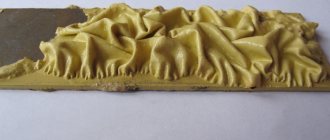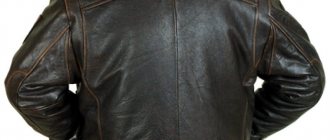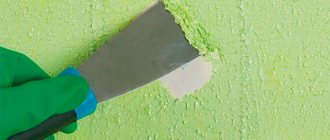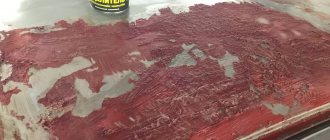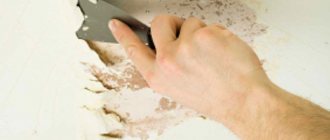Before applying new paint to a product, it is necessary to remove the previous layer, otherwise adhesion will be poor and it will not be possible to create a high-quality coating. But when working with metal and other surfaces, the grinding process is quite complicated and during work a lot of dirt is formed, which takes a lot of time to remove. Manufacturers have solved this issue by creating various removers that have a chemical composition and make it possible to reduce this process in terms of effort and time. Existing paint removers will be discussed in more detail below.
Selecting a washing method
If you want to change the paint on any metal object, you need to be patient. The first step is to remove the paint layer.
- Manufacturers are striving to improve their paint and varnish products.
- When repainting metal, this can become a serious problem: it is impossible to manually remove the old layer of paint due to its resistance to external factors.
- Therefore, you need to prepare before starting work: stock up on the appropriate equipment, find time, space, etc.
To remove the paint layer, there are 3 methods. Each of them is used in different conditions and depends on how many layers of paint are applied, how much money is allocated for this process, the type of paint, the availability of the required tools, etc.
Before you start washing off the paint, you should familiarize yourself with the following methods and choose the most optimal one.
How to make paint remover at home?
In everyday life, quite often there is a need to repaint or restore various surfaces that were once covered with varnish or paint. Note that the above need may apply not only to metal, but also to wooden surfaces.
The problem is especially common in private homes (painting equipment, fences and other surfaces). Meanwhile, painting with a second layer is not always appropriate. Washing off old paint in Almaty will allow you to get rid of old (partially destroyed) paintwork in a matter of minutes. Of course, you can try to make such a composition yourself (although in any case it will be inferior in efficiency).
Mechanical method
This method is the most difficult. It takes a lot of physical strength to remove paint mechanically. But this method does not require as much money as the other 2 methods require. In this way, paint was removed from metal in those days when special compounds had not yet been invented.
Necessary items: sandpaper and any power tool. You can also use a sharp knife.
The process of removing the previous paint layer involves manually picking it out. Then the remaining debris should be washed off with water.
What are the disadvantages of the mechanical method?
- This is extremely hard physical work. The larger the surface to be treated, the more time and effort you will have to spend.
- There is a risk of damaging the surface.
- After finishing work, everything around will be covered in dust, which can negatively affect your health.
- The method does not work for many types of paint.
Despite the severity, people still wash off paint in this way, regardless of the size of the surface being treated.
Choosing a method for removing paint
When choosing a wall paint remover, consider the following criteria.
- Type of dye - oil, acrylic or water-based. If the type is unknown to you, then you will need to select a removal method by experimenting on a small area. You need to start with the least labor-intensive methods. It is also important to know the number of layers and the strength of their adhesion to the wall.
- The material of the painted surface is concrete, wood, metal or drywall. For example, oil paint is the most difficult to remove from unplastered concrete.
- Further work includes painting, tiling, etc.
- The budget for the event is for the purchase of special tools and equipment.
- Possibility of ventilation.
How to remove plaque from brass
To renew the appearance of small brass items, you need to use a detergent. To do this, place the item in a pan with water and detergent and leave to boil for several hours. Then pull out the product and use a nylon brush to remove the paint. After this, to protect it from rust, you need to wipe the product with a rag with wax.
Next, the metal is primed and becomes available for applying a new paint layer.
The principle of using paint and varnish remover
By and large, we are talking about the use of powerful solvents that are applied to paint surfaces that need to be removed. The standard composition of the remover includes:
- organic solvents;
- disintegrants (they are the ones that swell the paint layer);
- thickeners (do not allow the remover to quickly evaporate from the surface).
It is recommended to use the remover as follows. Initially, the surface is quickly degreased (it is enough to remove the greasy film with quick movements of a cotton swab dipped in alcohol or solvent).
Using a brush, the remover is applied to the paintwork. There is no need to cover the wash with foil or any other covering material. All the wash user has to do is wait. The waiting time is usually written on the packaging.
Note that depending on the composition of the remover, it may vary. But in the vast majority of cases we are talking about 20 minutes. The remover can be applied to oil, pentaphthalic, glyphthalic paint and varnish coatings.
Thermal method
Required items: blowtorch, gas burner. This method will be effective if you need to remove several layers of old paint at once. However, the method is fire hazardous and is rarely used.
First, the surface to be treated must be washed. After this, heat it until the paint begins to bubble. In this state it is easier to remove it with a knife.
Precautionary measures must be observed: when working with the burner, you must ensure that there are no flammable objects nearby. Also, do not allow hot paint to come into contact with your skin. This will cause burns.
Disadvantages of the thermal method:
- This process cannot be carried out indoors, since toxic substances are released when the paint is heated.
- The operation cannot be carried out if the surface being treated is brass or cast iron.
- Also, some types of metals may lose their original shape when heated.
TOP 2 best universal cleaners
There are few universal paint removers and they are more expensive than conventional preparations, but they are suitable for treating any surface and effectively remove different types of paint coatings.
Grass Acid Cleaner
An acidic paint remover is highly effective and allows you to dissolve even a thick layer of paint.
old paintwork.
In terms of scope of application, the remover is intended for treating building facades finished with plastic, tiles, siding or glass. The product is universal, therefore it perfectly dissolves not only the old layer of paint or varnish, but also perfectly cleans the surface of limescale, rust or other contaminants of mineral origin.
The product comes in a large canister, and for application you can use either a special expander or a soft sponge. The remover is evenly distributed over the surface, left for 2-3 minutes, wiped with a brush and washed off with water. After this, the surface is allowed to dry completely and painting or other finishing work can begin.
Specifications:
- type: cleaner;
- processing material: metal, plastic, glass;
- Application method: spray, sponge.
pros
- economical consumption;
- removes old paint perfectly;
- effectively removes rust and limescale;
- suitable for all types of surfaces;
- does not have a sharp unpleasant odor.
Minuses
- costs more than analogues;
- not very convenient to apply.
V33 Universal paint remover Decapant Gel Express
This universal product for removing old paint or varnish is made using a special technology, thanks to which
The active ingredients of the drug penetrate deep into the coating and effectively destroy it. The product is considered universal, as it is suitable not only for metal, but also for other coatings, such as natural stone, glass, concrete and plastered walls.
The components of the product penetrate deep into the old paintwork and destroy it. But before use, you should take into account that the drug only affects one-component preparations: the remover will not be able to dissolve two-component products.
The drug has a gel-like structure, so it does not splash or run down even when applied to vertical surfaces. After use, the product does not change the treated surface, for example, it does not cause blackening of wood and does not provoke corrosion.
Specifications:
- type: cleaner;
- processing material: stone, metal, wood, concrete, glass, plaster;
- Application method: brush, spatula;
- Drying time 30 minutes.
pros
- suitable for different types of surfaces;
- quickly penetrates deep into the coating;
- short drying time;
- can be applied to vertical surfaces;
- has no pungent odor.
Minuses
- not very convenient to apply with a brush;
- not suitable for plastic.
Chemical method
The best way to remove old paint from metal is to use a special liquid that is sold in stores. There is no need to use anything else, which saves a lot of money. There are many similar liquids. All of them are designed for different working conditions.
How do these chemical compounds work? Getting inside the unnecessary paint, they soften it, which makes it extremely easy to remove the layer.
Paint removers contain paraffin and wax.
- They help reduce the amount of harmful substances that are formed during work, which increases work safety. However, there are also products where more advanced components are used instead of paraffin and wax.
- Before working with a chemical, the surface must be washed with water or soapy water. If you need to wash off oil paint, then instead of water you need to use acetone.
The most popular detergents are produced abroad. However, no one prohibits the use of domestic products. The choice of product most often depends on its price. If you don’t know what kind of paint you will have to work with, then you should buy universal products.
Criteria for choosing a solution for washing off old coating
To paint different objects, paints and varnishes on different bases are used:
- Water-based and water-dispersed dyes are water-based, so to wash them off you will definitely need quite a large amount of water;
- oil-based paints are dissolved with hydrocarbon solvents, in this case, to wash off, you will definitely need to contain alcohols, which will turn the solid substance into a semi-liquid state;
- nitro paints are dissolved only with solvents that contain acetone; as additional substances, the remover must contain an inhibitor (chemical reaction retardant), which will reduce the evaporation of the main solvent;
- polymer-based coatings can only be removed using strong alkalis or acids.
Each case requires a different type of solvent that will destroy the internal bonds in the layer of the old coating.
Important! It should be remembered that washes only destroy the layer. To completely remove it, additional mechanical removal will be required using spatulas, scrapers or other mechanical devices.
The presence of various properties of dyes requires in each case to be approached using a specific solution for removing paintwork.
Examples of chemical compositions
Chemical compositions are produced not only in liquid form, but also in the form of gels, powders, and aerosols. Varieties of compositions will be useful when removing paint in different conditions. For example, using powder is convenient to work with vertical surfaces, because in this case the liquid would flow down.
Precautions must be observed: because We are working with chemicals, we need to prepare. You should buy a respirator, goggles, gloves. Also, do not forget about regular ventilation of the room.
This method of removing paint is also the simplest. Just apply the composition and wait. Then the paint is easily separated from the surface.
The method has a drawback - you have to work with toxic substances, which is dangerous to health. It is also impossible to wash off a thick layer of paint at once. You will have to repeat the operation several times.
By applying the above 3 paint link methods, you can easily remove the unnecessary paint layer.
Removing Oil Paint
There are many chemical removers on sale for removing oil paints (for example, Constant, Neomid, Dufa Abbeizer). They contain acetone, paraffin, and organic solvents. The effect of the removers is noticeable after 5-10 minutes: the coating softens, deforms, after which it is easy to remove with a spatula.
Material consumption can vary between 150 and 400 grams per square meter. The specific consumption rate is almost impossible to determine in advance, since it largely depends on the thickness of the paint layer. Based on the above, it is recommended to buy remover with a certain reserve.
Cleaning composition "Constant"
As an example of a remover, consider the composition from the Ukrainian-made “Constant” brand. "Constant" can be used to remove oil, pentaphthalic and glyphthalic paints, varnishes, drying oils from wooden and metal surfaces.
"Constant" contains organic-based solvents, disintegrants, and thickeners. Externally, the wash looks like a thick gray-white or brown-yellow suspension. The average consumption of the Constanta preparation is from 150 to 170 grams per layer.
Technical parameters of the cleaning composition:
- The share of non-volatile components is from 2 to 10%.
- The level of evaporation at a temperature of 20 degrees above zero is up to 6%.
- The time spent on washing off one layer is up to 20 minutes.
- Corrosive effect on metal - from 20 minutes.
Note! The drug should be stored in hermetically sealed packaging, away from direct sunlight or heating appliances.
The composition does not need to be diluted with a solvent, as it is already ready for use. However, the solution must be thoroughly shaken before use: it is important to ensure its homogeneity. If, even after shaking, separation remains (usually a consequence of storage at low temperatures), it is recommended to heat the jar in a water bath.
The wash is applied using a brush or roller at an air temperature of at least 10 degrees Celsius. After approximately 20 minutes, the paint material will begin to soften and peel off. If the layer is too thick and cannot be removed immediately, you can repeat the surface treatment with a remover.
After removing the coating, the surface should be wiped with a solvent, but not just any solvent, but from a highly volatile group. This is an important point because solvent residue can ruin the new finish.
If you are removing an oil paint stain from clothing, you should definitely wash it.
Folk remedies
If there is no time or money to purchase a cleaning agent, the oil coating can be washed off using the following time-tested folk methods:
- Mixtures of turpentine with ammonia. The solution is prepared in the following proportion: take 1 part of turpentine for 2 parts of ammonia. Apply the liquid with a brush, wait for an hour until the coating begins to swell. Remove it with a spatula, wash and dry the cleaned surface.
- A solution of quicklime (70%), potash (30%). Water is added in such a way as to obtain a viscous mixture. We apply the finished substance to the desired area, wait for at least 12 hours, after which we remove the paint and varnish with a spatula.
- A paste-like mixture of chalk and lime paste. We prepare the composition as follows: mix 5 kilograms of chalk with the same amount of lime paste. Add a little 20% caustic soda. Apply a 2 mm layer of the paste-like substance onto the material being processed. After 60-90 minutes, the paint layer will become pliable and can be removed mechanically.
